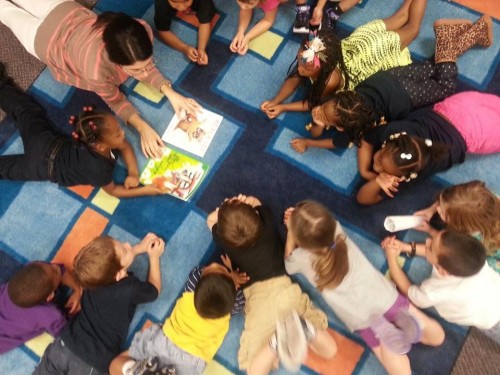Earlier this month, NSNO hosted a conversation between US Education Secretary John King and a group of New Orleans educators, parents, and community leaders to talk about increasing racial and socioeconomic diversity in New Orleans public schools.
That conversation has helped inform our perspective on a complicated subject. Ultimately, we believe that New Orleans must increase the number of schools that reflect the diversity of our city as a whole, and that doing so would provide one avenue to building a stronger, more cohesive, and more equitable city.
As Secretary King said in a speech at the National PTA conference in Orlando prior to his visit, “Like math and reading, like science, social studies, and the arts, diversity is no longer a luxury. It’s essential for helping our students get ready for the world they will encounter after high school and, increasingly, throughout their lives.”
New Orleans has demonstrated what should be obvious: cities do not need integrated schools for students of color to achieve. Right now, most public schools in New Orleans are not diverse: 80% of all schools serve a population that is at least 80% economically disadvantaged, and over 75% of the schools serve at least 95% students of color. The students and educators in these schools have already driven the largest academic improvement in the shortest amount of time of any district that Tulane’s Education Research Alliance could find.
Still, there are clear benefits – academically and otherwise – to increasing diversity.
Research shows that all students benefit, both academically and social-emotionally, from attending schools with racially and socioeconomically diverse populations. Students are more likely to get higher test scores with “low-income disadvantaged minority youth” benefitting the most. And, exposure to students with different backgrounds can increase tolerance, reduce racial bias, and increase the likelihood they will “seek out integrated settings later in life.”
While educators across the city continue to serve the students in their schools – regardless of background – we believe New Orleans is well positioned to provide more students from diverse backgrounds with opportunities to come together to learn and play.
In New Orleans, we develop and launch new schools and new models: Educators in New Orleans can launch new types of school models that respond to parent, community, and student demand. As a result, New Orleans families have a wide array of school offerings to choose from including the creative arts, language immersion, STEM, and those designed to reflect the demographics of our city like Morris Jeff Community School and Bricolage Academy.
Our diverse schools are among our most popular: As of this year, only four schools in the city’s unified enrollment system, OneApp, have student populations that reflect the broader socioeconomic makeup of New Orleans. Each is among the most sought after by families of all demographics. Applications often reach nearly three times the number of available seats.
Our citywide open-enrollment policy allows us to voluntarily – and sustainably – integrate: New Orleans families can select from public schools located throughout the city. New Orleans’ nearly all choice system has removed barriers like zoned enrollment and forced busing, which have historically been two of the biggest obstacles to effective and sustainable school integration.
The structure of our school system and growing demand for diverse settings make New Orleans uniquely primed to become a more integrated urban school district.
###
Conversations with families, students, and colleagues across the city and country are helping us grapple with key questions around the intersectionality of social justice and academic improvement.
Creating more intentionally diverse schools will not eradicate systemic injustice in New Orleans. We need sustained reform efforts across multiple sectors—including education—to realize that vision. But by creating more schools that reflect the population of our city, we believe we can meet a clear community demand, accelerate academic improvement, and build greater understanding across lines of difference within our community.
